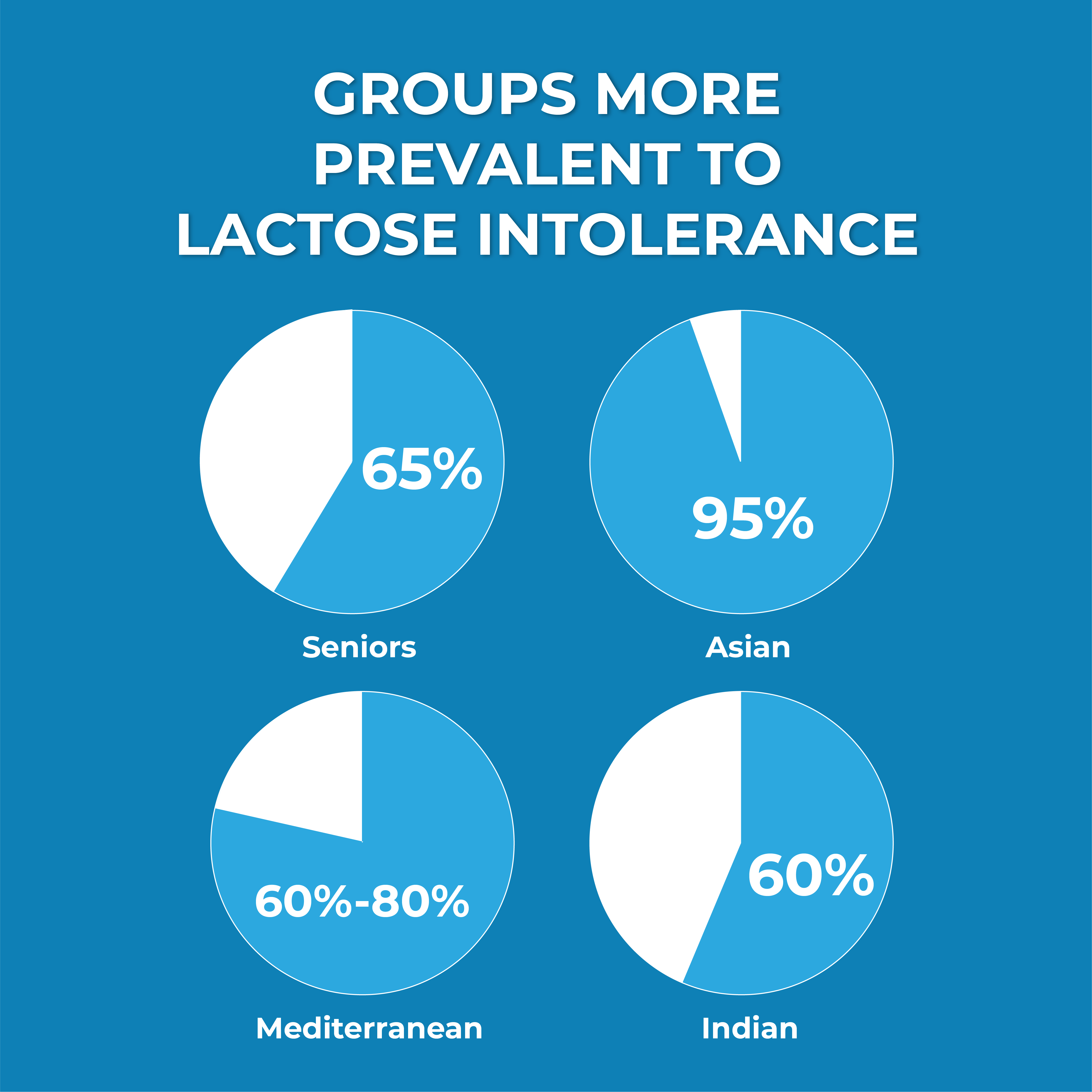Lactose intolerance is a common digestive disorder that affects millions worldwide, presenting with various degrees of severity and types. This intolerance stems from the body’s inability to digest lactose, the sugar found in milk and dairy products. This is due to insufficient levels of lactase enzymes produced in the small intestines. The manifestation of lactose intolerance can have several causes which impact the severity and progression of the condition. Lactose intolerance can be classified according to the following different types: Primary, Developmental, Secondary, and Congenital.
Primary Lactose Intolerance
Primary lactose intolerance is the most common type of lactose intolerance. It is estimated that primary lactose intolerance (sometimes called lactase deficiency or lactase malabsorption) affects 65% of the world’s adult population.
Many people wonder what the reason is for their lactose intolerance or if lactose intolerance is a genetic disorder. Primary lactose intolerance is genetic and is predominant in races where dairy has not traditionally been a staple part of the diet. Lactose intolerance is particularly common among Chinese and other Asian people followed by Mediterranean and Indian. Approximately 20% of the Australian population are lactose intolerant, affecting approximately 5% of Caucasians and 65% of non-Caucasians.

Developmental Lactose Intolerance
Developmental lactose intolerance, or transient lactase deficiency, occurs in infants and young children when their bodies temporarily produce low levels of lactase. This may occur when a baby is born prematurely or is born with an immature digestive system.
For many infants their lactase production is insufficient for the amount of dairy they consume in breast milk or infant formula. Studies show approximately 40% of babies medically diagnosed with colic actually have colic associated with Lactose Intolerance.
Pre-treating babies’ feeds with lactase enzyme supplements has been clinically proven to reduce crying time by at least 45% – from the first feed for infants with developmental lactose intolerance.
Most children will grow out of lactose intolerance by 3-4 months of age as their digestive system matures.
Secondary Lactose Intolerance
Secondary lactose intolerance or secondary lactose deficiency is typically temporary and often develops after a gastrointestinal illness that damages the lining of the intestines, reducing the production of lactase. Symptoms include bloating, diarrhea, and gas after consuming dairy products.
Common causes of secondary lactose intolerance are:
- Gastroenteritis
- Persistent diarrhea
- Intestinal parasites
- Giardiasis
- Chemotherapy
- Crohn’s disease
- Inflammatory bowel disease
- Irritable bowel syndrome
- Coeliac disease.
Fortunately, for most people secondary lactose intolerance is temporary as their intestines heal and lactase production returns to normal.
Congenital lactose intolerance
Congenital lactose intolerance is a rare lactose intolerant genetic disorder in which individuals are born with a complete absence or severe deficiency of lactase. Unlike developmental or secondary lactose intolerance, which is temporary, congenital lactose intolerance is a lifelong condition. Symptoms usually appear shortly after birth when the infant is fed milk and dairy products, leading to diarrhoea, bloating, and failure to thrive. Diagnosis is typically confirmed through genetic testing. Treatment involves strictly avoiding lactose-containing foods and using lactose-free infant formulas or milk alternatives.
The severity of lactose intolerance can vary among individuals, and many people may tolerate small amounts of lactose without experiencing symptoms. For primary, secondary and developmental lactose intolerance managing symptoms can be achieved by using lactase enzyme supplements such as Lacteeze tablets, Lacteeze Drops, or Lacteeze Infant Drops to reduce the lactose content of milk.
Lactose intolerance is different from a milk allergy, where the immune system reacts to proteins in milk rather than the inability to digest lactose. In cases of dairy allergy it is important that lactose is avoided altogether until a medical practitioner has been consulted.
Despite their differences, all types of lactose intolerance can be managed through dietary changes, lactase enzyme supplements, and in some cases, the use of lactose-free products.
Understanding the differences between these types of lactose intolerance can help individuals and healthcare providers effectively manage symptoms and improve quality of life.








